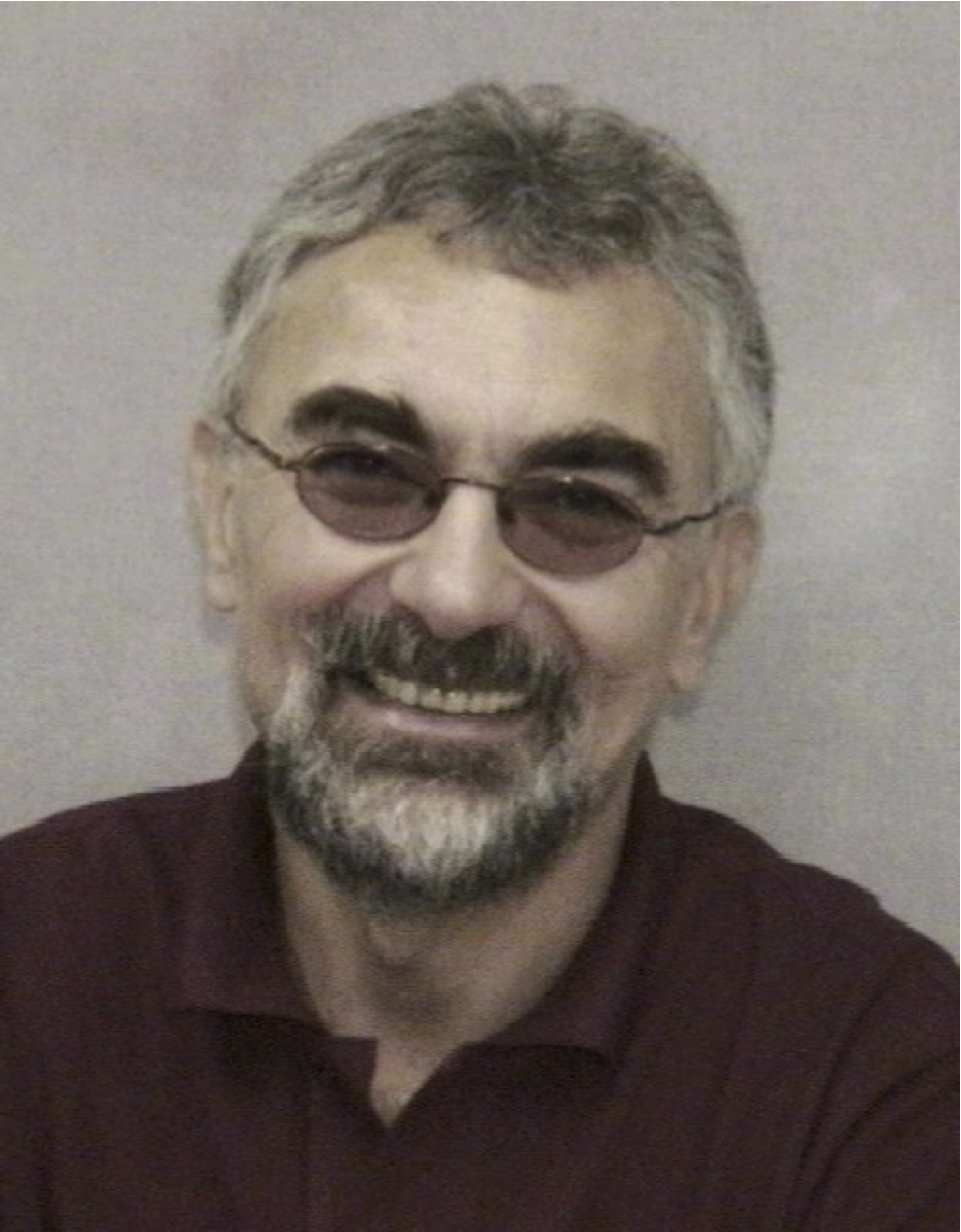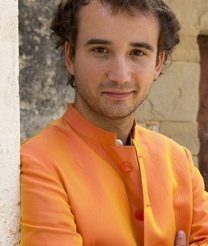The 9th IEEE International Conference on Wireless and Mobile Computing, Networking and Communications (WiMob 2013)
Lyon, France, October 7-9, 2013
Keynote Speakers
- Massive MIMOs, Single RF Chains, HetNets and All That...
Speaker: Prof. Lajos Hanzo, University of Southampton, UK.
Tuesday, October 8, 2013, Ampere A+B - 9:00-10:15. - Machine-to-Machine in Smart Cities: Vision, Technologies & Applications
Speaker: Prof. Mischa Dohler, King’s College London, UK
Wednesday, October 9, 2013, Ampere A+B - 9:00-10:15.
Massive MIMOs, Single RF Chains, HetNets and All That...
Speaker: Prof. Lajos Hanzo, University of Southampton, UK.
Chair: Prof. Abderrahim Benslimane, University of Avignon, France
Tuesday, October 8, 09:00-10:15
Room: Ampere A+B
Abstract
The classic Shannon-Hartley law suggests that the achievable channel capacity increases logarithmically with the transmit power, which is not a 'good deal'! More beneficially, the MIMO capacity increases linearly with the number of transmit antennas, provided that the number of receive antennas is equal to the number of transmit antennas. With the further proviso that the total transmit power is increased proportionately to the number of transmit antennas, a linear capacity increase is achieved upon increasing the transmit power, which justifies the spectacular success of MIMOs... However, there are huge challenges, which have to be tackled, before these 'massive MIMOs' might become an off-the-shelf reality. For example, estimating all the (N x M) MIMO channels imposes a potentially excessive complexity, hence - perhaps somewhat surprisingly owing to its potential performance erosion - non-coherent detection might become an attractive low-complexity solution, as demonstrated in this lecture. Another challenge is the provision of numerous Radio-Frequency (RF) chains, which is THE most costly part of a transceiver. This problem might be circumvented with the aid of Spatial Modulation (SM), where only a single one or a limited fraction of the transmit antennas is activated during any symbol interval. This 'win-win saga' continues, since apart from the potential benefit of requiring only a single RF chain, SM also has the potential of implicitly conveying extra bits by inferring say log_2(M) bits from the specific index of the activated transmit antenna, as discussed in this light-hearted overview...
Biography of Prof. Lajos Hanzo
Lajos Hanzo (http://www-mobile.ecs.soton.ac.uk) FREng, FIEEE, FIET, Fellow of EURASIP, DSc received his degree in electronics in 1976 and his doctorate in 1983. In 2009 he was awarded the honorary doctorate ``Doctor Honoris Causa'' by the Technical University of Budapest. During his 37-year career in telecommunications he has held various research and academic posts in Hungary, Germany and the UK. Since 1986 he has been with the School of Electronics and Computer Science, University of Southampton, UK, where he holds the chair in telecommunications. He has successfully supervised 80+ PhD students, co-authored 20 John Wiley/IEEE Press books on mobile radio communications totalling in excess of 10 000 pages, published 1300+ research entries at IEEE Xplore, acted both as TPC and General Chair of IEEE conferences, presented keynote lectures and has been awarded a number of distinctions. Currently he is directing a 100-strong academic research team, working on a range of research projects in the field of wireless multimedia communications sponsored by industry, the Engineering and Physical Sciences Research Council (EPSRC) UK, the European Research Council's Advanced Fellow Grant and the Royal Society's Wolfson Research Merit Award. He is an enthusiastic supporter of industrial and academic liaison and he offers a range of industrial courses. He is also a Governor of the IEEE VTS. During 2008 - 2012 he was the Editor-in-Chief of the IEEE Press and a Chaired Professor also at Tsinghua University, Beijing. His research is funded by the European Research Council's Senior Research Fellow Grant. For further information on research in progress and associated publications please refer to http://www-mobile.ecs.soton.ac.uk Lajos has 17 000+ citations.
Machine-to-Machine in Smart Cities: Vision, Technologies & Applications
Speaker: Prof. Mischa Dohler, King’s College London, UK
Chair: Prof. Fabrice Valois, Insa Lyon,France
Wednesday, October 9, 9:00-10:15.
Room: Ampere A+B
You can download the presentation here
Abstract
The unprecedented communication paradigm of machine-to-machine (M2M), facilitating 24/7 ultra-reliable connectivity between a prior unseen number of automated devices, is currently gripping both industrial as well as academic communities. Whilst applications are diverse, the in-home market is of particular interest since undergoing a fundamental shift of machine-to-human communications towards fully automatized M2M. The aim of this keynote is thus to provide academic, technical and industrial insights into latest key aspects of wireless M2M networks, with particular application to the emerging smart city vertical. Notably, I will provide an introduction to the particularities of M2M systems. Architectural, technical and privacy requirements, and thus applicable technologies will be discussed. I will dwell on the capillary and cellular embodiments of M2M. The focus of capillary M2M, useful for real-time data gathering in cities, will be on IEEE (.15.4e) and IETF (6LoWPAN, ROLL, COAP) standards compliant low-power multihop networking designs; furthermore, low power Wifi will be dealt with and positioned into the eco-system of capillary M2M. The focus of cellular M2M will be on latest activities, status and trends in leading M2M standardization bodies with technical focus on ETSI M2M and 3GPP LTE-MTC. Open technical challenges, along with the industry’s vision on Smart Cities & M2M and its shift of industries, will be discussed during the talk.
Biography of Prof. Mischa Dohler
Mischa Dohler is Chair Professor in Wireless Communications at King's College London, UK. He is Distinguished Lecturer of IEEE ComSoc, Senior Member of the IEEE, and Editor-in-Chief of ETT. He frequently features as keynote speaker and had press coverage by BBC and Wall Street Journal. He is a tech company investor and also entrepreneur, being the cofounder, former CTO and now with the Board of Directors of Worldsensing. He is fluent in 6 languages. In the framework of the Mobile VCE, he has pioneered research on distributed cooperative space-time encoded communication systems, dating back to December 1999 and holding some early key patents. He has published more than 160 technical journal and conference papers at a citation h-index of 32 and citation g-index of 67, holds a dozen patents, authored, co-edited and contributed to 19 books, has given more than 30 international short-courses, and participated in ETSI, IETF and other standardisation activities. He has been TPC member and co-chair of various conferences, such as technical chair of IEEE PIMRC 2008 held in Cannes, France. He is/has been holding various editorial positions for numerous IEEE and non-IEEE journals and special issues. From 2008-2013, he held various roles at CTTC such as Director of Research, Head of Intelligent Energy [IQe] and Senior Researcher. From 2010-2012, he has been the CTO of Worldsensing. From 2005 to 2008, he has been Senior Research Expert in the R&D division of France Telecom, France. From 2003 to 2005, he has been lecturer at King's College London, UK. At that time, he has also been London Technology Network Business Fellow receiving Anglo-Saxon business training, as well as Student Representative of the IEEE UKRI Section and member of the Student Activity Committee of IEEE Region 8 (Europe, Africa, Middle-East and Russia). He obtained his PhD in Telecommunications from King's College London, UK, in 2003, his Diploma in Electrical Engineering from Dresden University of Technology, Germany, in 2000, and his MSc degree in Telecommunications from King's College London, UK, in 1999. Prior to Telecommunications, he studied Physics in Moscow. He has won various competitions in Mathematics and Physics, and participated in the 3rd round of the International Physics Olympics for Germany.

